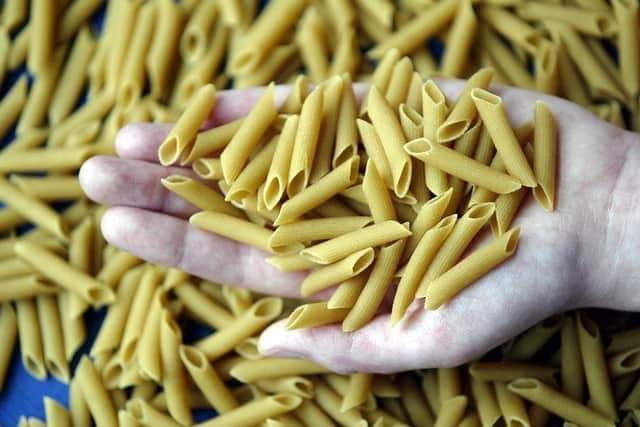Cost-of-living: Prices for cheapest pasta soar 50% as inflation hits poorest households
The Office for National Statistics (ONS) said that pasta prices rose 50% between April last year and April this year.
It tracked the increases in the price of the lowest-cost items in supermarkets the length and breadth of the country.
Advertisement
Hide AdAdvertisement
Hide AdStatisticians chose 30 everyday items that they know the least well-off households regularly buy to get an idea of how inflation is hitting the ordinary man and woman in the street – and how it is hitting them in the pocket.


They trained algorithms to select the cheapest possible alternatives on the websites of the country’s largest food retailers, including Asda, the Co-op, Iceland, Morrisons, Sainsbury’s, Tesco and Waitrose, and tracked its price over the year.
Despite Aldi and Lidl being among the cheapest supermarkets in the UK they were not included as they do not allow customers to shop online unlike their competitors.
The data found that pasta prices rose at the fastest rate, followed by crisps (17%), bread (16%), minced beef (16%) and rice (15%).
Falls were seen in the price of potatoes (14%), cheese (7%), pizza (4%), chips (3%), sausages (3%) and apples (1%).
It comes as experts recently warned that the poorest households in the country are bearing the brunt of the cost-of-living crisis.
While inflation hit a 40-year high of 9% in April as measured by the Consumer Prices Index, those who are least well off spend a larger proportion of their income on the basics, such as energy bills.
As a result the Institute for Fiscal Studies has suggested that inflation for the poorest households ran at 10.9% in the year to April.
Advertisement
Hide AdAdvertisement
Hide AdThe latest ONS analysis indicates that, at least for the 30 items it chose, inflation for the cheapest alternatives has been running similar to overall food and alcohol prices, increasing by between 6% and 7%.
However, it does not take into account the costs associated with buying a product. For instance potato prices have dropped significantly over the last year, but many struggling households avoid potatoes, because they take longer to boil than alternatives and therefore use more expensive gas.
In March the boss of Iceland said that some food bank users were turning down potatoes and other root vegetables because they could not afford to boil them.
The ONS acknowledged that the research it has done is “highly experimental”.
It warned that because the analysis only focuses on the lowest-priced goods the estimates are based on a very small number of price quotes. This means that the data is very sensitive to changes in just one item.
It also does not mitigate the concerns of food campaigner Jack Monroe who has criticised supermarkets for allegedly limiting access to their cheapest products in store.
“The available products represent the retailer’s online catalogue, rather than the range of products available or bought in local stores that month,” the ONS said.
Comments
Want to join the conversation? Please or to comment on this article.